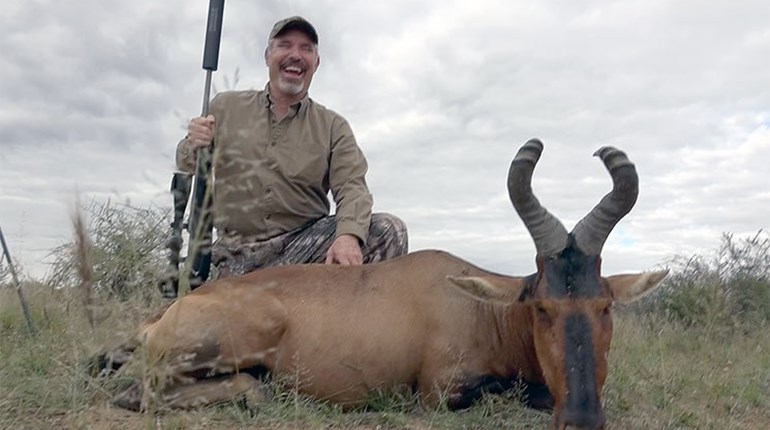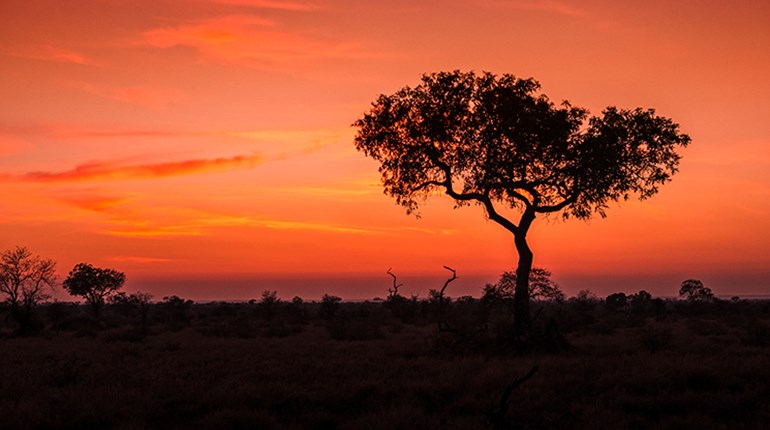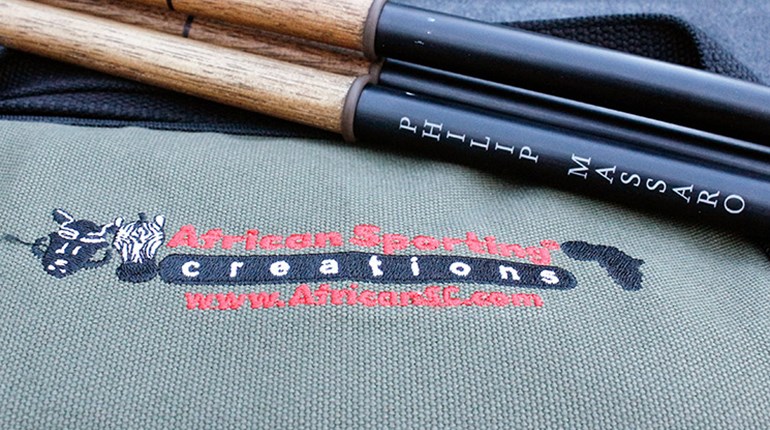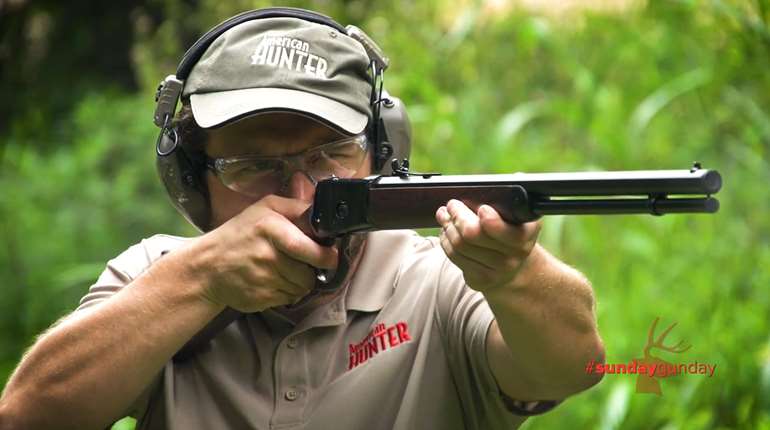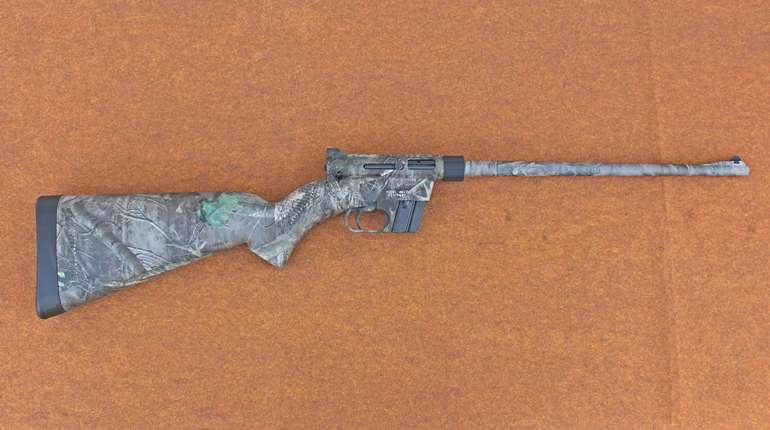The sun was sinking quickly. Soon it would disappear behind the distant trees on the Botswana side of the Marico River. The warthog we were after, a big male with impressive tusks Shadrack had spotted two days prior, was unlikely to make an appearance at this late hour. Two duikers present an hour earlier had fed out of sight. The dozen or so smaller warthogs that dotted the landscape throughout the evening had long since retired to their burrows. Rutting impala rams, spewing their guttural, seemingly unnatural roars, had fallen silent. So had various doves, sparrows, hornbills and francolins that had serenaded us since our late-afternoon arrival.
With darkness slowly enveloping the veldt, it wouldn’t be long before Shadrack would bring the truck to take us back to camp for the final time.
As I watched that orange orb slip away, I couldn’t help but feel one of the great times of my life was fading with it. There would never be another “first” Africa for me—that I knew for certain. More pressing was the realization that, though still young at 52 and 30, respectively, there was no guarantee Dad and I would ever share an adventure like this again.
We arrived in Johannesburg on the evening of May 13. Upon clearing passport control and customs, retrieving our luggage and completing the rifle-importation formalities with the South African police, we were out of O.R. Tambo International Airport and on our way to our first hunting area. We would begin our safari three hours to the west in the open country of South Africa’s North West province near Swartruggens (Afrikaans for “black ridges”). It’s a small farming community that served as a British supply depot after the famed siege of Mafeking during the Second Boer War.
As we bounced along the dirt road into camp, drained from our 17-hour flight from the States, the sight of eyes in the headlights jolted us back to life.
“Sable,” said Pieter Potgieter, our professional hunter and the owner of Motsomi Safaris. He swung the truck off the track so we could get a look at the bull’s sweeping horns. “Looks like a young bull with pretty good potential.”
Farther along, we spotted more eyes, this time from a herd of blesbok. Then as we crossed the breastwork of a dry earthen dam, a lone waterbuck bull eased down the embankment. I actually get to hunt here? My mind raced with the possibilities morning would bring.
It was too dark to get an accurate picture of our surroundings when we arrived in camp, but daybreak confirmed what I had suspected: We were in hunting paradise. The lodge, a well-appointed brick structure with a traditional African thatched roof, sat atop a high bluff with 360-degree views of the countryside, which was awash in golden sunlight.
Like kids on Christmas morning, Dad and I were up with the sun, despite Pieter’s advice to rest after our flight. We were soon joined on the veranda by Mom, who, though not a hunter, didn’t want to miss the fun. Already keyed up from seeing so much game on the drive into camp, our anticipation level was heightened when we laid eyes on the scores of mounts lining the lodge’s walls. Pieter indulged our many questions regarding the different species, and he gave us a thorough tutorial on gauging trophy quality using the mounts as teaching aids.
Although a kudu was at the top of my wish list, one unassuming species in particular caught my eye among the many mounts, so it was only fitting that we would hunt blesbok first.
After a light breakfast we drove over to the skinning shed and picked up our tracker, Shadrack, then headed to the range to sight-in our rifles. I was shooting a Remington Model 700 in .30-06. Dad bought a Model 700 XCR II in .375 H&H Mag. in advance of our trip, a purchase made with an eye toward someday pursuing Cape buffalo.
From the shooting bench we could see herds of blesbok and springbok in the distance. Stalking within range in the wide-open terrain with so many eyes would be difficult, so we circled around and used a crease in the land to flank them. There were several good springboks to choose from, but we decided to try our luck with the blesbok first, after Pieter spotted an exceptional ram.
Dad, like so many times through the years, was adamant that I take the first shot, and he wished me luck.
Employing a tactic familiar to pronghorn hunters, Pieter opened a giant camouflage umbrella to hide our forms, and we advanced behind it, cutting the distance to perhaps 150 yards. We crawled the final span to a scrub bush, and Pieter put up the shooting sticks.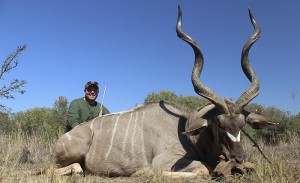
Our boy was covered in the back of the herd, but it was easy to keep track of him—his horns were longer and heavier, and his body darker, than the others. As we waited for the shot, my mind wandered back to the words Dad had spoken when we booked our trip at the 2012 Harrisburg show: “I can’t wait to see the look on your face when you tip over your first African animal. Once Africa gets in your blood, life will never be the same.”
Dad knew that lesson well, having fulfilled his lifelong dream of hunting Africa three years earlier (also with Pieter). Now we were on the Dark Continent together. It was only fitting that after a lifetime of sharing his love for hunting with me, my first taste of Africa would come with Dad by my side. This is the same man who was there when I shot my first limit of squirrels; the man who was there when, to my surprise, I connected on a 200-yard shot to kill my first deer; the man who helped me call in my best gobbler to date just five seasons ago.
The herd began to part, snapping me back into the moment. When the shot presented itself, I settled the crosshairs on the blesbok’s shoulder, slowly pulled the trigger and ... blew the shot. The herd froze. I ran the bolt on the Remington and shot again. The herd took off, and my blesbok immediately fell behind. Though probably unnecessary in hindsight, I shot again and broke his back, putting him down for good.
I looked back at Dad and gave him a thumbs-up. I couldn’t tell you whose smile was bigger.
“Just like the mounts we saw at the lodge last night,” Dad said, running his fingers along the white-ringed ridges on the blesbok’s horns.
“He is an old ram,” Pieter added. “Those white ridges are a sign of age. His horns are very thick and will likely go 16- or 16 1/2-inches long. I know score isn’t important to you, but that is a gold-medal blesbok.”
To boot, Pieter reminded us that although blesbok are found in many areas of southern Africa today, they are indigenous to the part of South Africa we were hunting.
After handshakes and photos, we noticed the springboks hadn’t moved far, so I passed the 06 to Dad. Using our umbrella trick again, we were able to get in range, and soon Dad had his springbok, an animal that had eluded him on his first safari.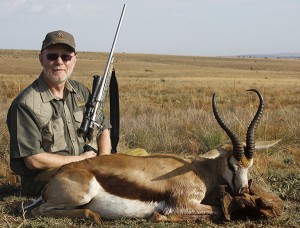
We were two for two, with virtually our whole safari in front of us. I couldn’t wait to explore more of this land, and I was thankful to be sharing the experience with the man I respect most, the man who taught me everything I know about hunting and shooting. Dad never said it in so many words, but I know the feeling was mutual.
That afternoon we were admiring a herd of zebra on a steep hillside when Dad spotted a gemsbok in the distance. We had seen a few gemsbok earlier, and we could tell instantly this one was larger.
“It’s a bull,” Pieter said as he studied the animal through his Swarovski. “He’s not the biggest one you’ll find, probably about 34 inches, but he’s a good representative gemsbok for this area.”
We were on the back side of the property, and it was steeper and brushier than the open terrain we had hunted that morning. The bull stood atop the next ridge, feeding in a field lined with brush.
“He’s farther than he looks, but we should be able to get to him before dark,” Pieter continued. “Do you want to try?”
We did. And knowing that Dad wanted to christen his .375, I told him to go get his bull.
The hillside was steep, but we slowly threaded our way to the top. When we reached the brush line along the summit, Pieter peered over the edge while Dad and I stayed tucked out of sight. The big bull was still there, but two gemsboks we had seen before—a young bull and another with a broken horn—had joined him.
“Craig, the bull you want is the one on the left,” Pieter instructed. “The grass is tall, so you will need to stand for the shot. When I put up the sticks, get on them and shoot quickly, as the other two are close and will likely see you.”
Dad crawled up to the edge and was on his feet as soon as Pieter raised the sticks. I remained down but erupted to my feet at the report of the shot. I immediately saw the lesser bulls running off, then noticed two long, spear-pointed horns protruding above the grass. Dad explained the bull had turned and was quartering away when he stood to shoot. He aimed for the last rib, driving the Barnes Triple Shock into the offside shoulder.
As we admired Dad’s gemsbok, we were treated to a sunset every bit as dramatic as the sunrise we witnessed that morning. Looking over the countryside, I was reminded of the many days growing up when Dad, never one to complain, had gone off to work in the steel mills of southwestern Pennsylvania to secure a living for our family. He had talked about going to Africa for as long as I can remember. There had to have been times when he secretly wondered if he’d ever get here. Now, he was back for a second time. Seeing the smile on his face as he soaked in the surroundings of his realized adventure meant more to me than any trophy we would collect on this trip.
“Is it everything you thought it would be?” he asked.
“And then some,” I replied, those being the only words I could muster, lost in the sudden realization that I would never be in this exact place and time again, and not wanting it to end.
One of the reasons we began our safari in the North West was to hunt black wildebeest, an animal indigenous only to the grasslands of South Africa. On our second day we both killed excellent black wildebeest bulls on a huge cattle ranch near the town of Ventersdorp. I also took a fine red hartebeest there at the end of a demanding stalk.
With the blesbok, springbok and black wildebeest we sought in the North West under our belts, we prepared to move on to Pieter’s main camp in South Africa’s Limpopo province. However, thanks to a stroke of good fortune, we remained in the North West an extra day to hunt greater kudu, the decided patriarch of Africa’s famed family of spiral-horned antelope.
Pieter had been offered the chance to take five kudu bulls off a property that had been closed to hunting for some years. After seeing trail-camera photos of some absolute monsters, he jumped at the opportunity. Dad and I were the first hunters to reap the fruit of that agreement.
There was just one catch: Two bulls, a 60-inch bruiser the landowner wanted to keep around and another with 60-inch potential, were off-limits. Everything else was fair game, and the landowner offered us the service of one of his farmhands who knew the two charmed bulls well.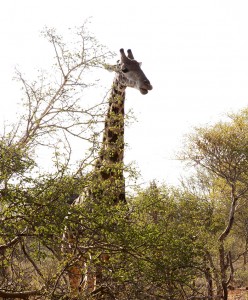
That farmhand’s knowledge of the land, the kudu and their favorite haunts proved invaluable. We saw a lot of kudu, including one bull that would have been a shooter in any other situation, but the really big bulls seemed to be in hiding. It was as if they knew they were being hunted—and they were.
In late morning we came upon a mature bull and his harem of cows. They took off around the side of a hill, and the stalk was on. Instead of following, we went up and over the hill, hoping to intercept the herd on the other side. Pieter’s plan worked to perfection, as we could see the bull’s corkscrew-shaped horns moving through the thicket below.
Unable to weave a bullet through the brush, we were plotting our next move when the farmhand, having never hunted before and unable to understand why we weren’t trying to get closer, set off in the direction of the bull. The bull swapped ends and disappeared in the brush. Undaunted, we retraced our footsteps. When we passed the truck, however, Pieter’s tracking dog, an Australian cattle dog/Jack Russell mix named Ghani, jumped out and raced down the hill and into the brush, eliciting a sharp alarm bark from one of the kudu cows.
The hunt should have ended after this comedy of errors, but with Ghani secured and the farmhand reined in, we decided to loop back around and try to get ahead of the bull once more. Miraculously, Pieter soon spotted one of the cows tucked into the shade of a tree line across an open field, 200 yards distant. Then Dad spotted another. Glassing that tree line, Pieter located the bull under a tree, perfectly camouflaged in the shade. Fortunately, the bull was looking back to where we had been, not realizing we had gotten ahead of him again. Pieter set up the sticks, and I used his shoulder to brace my right elbow. At the shot, the bull jumped and bucked, then raced off into the bush.
We found him 75 yards from where he stood, and although he was not one of the bulls Pieter had seen in pictures, to say I was proud of him would be an understatement. His body and neck were huge, and his horns were deeply curled with classic ivory tips—a herd bull without question.
“This is what you came to Africa for, isn’t it?” Dad asked, peering through the curl of the kudu’s horn. It was big enough to drop a baseball through cleanly.
We broke camp the next day, but not before Dad killed a second springbok, a ram too good to pass up, a ram that green-scored 417/8 inches SCI, making it the largest killed in the history of Motsomi Safaris.
In the Limpopo, Dad connected on a blesbok of his own, and I added an impala and a cull blue wildebeest cow to my bag.
I decided then that after years of watching him put me first, I wanted the rest of the safari to be about Dad.
We set out the following afternoon in search of a steinbok, a tiny antelope found across much of southern and eastern Africa that stands less than 2 feet at the shoulders and wears arrow-straight, coal-black horns.
Steinbok are territorial creatures, and Pieter had a good idea where one could be located. We came across a big one, relatively speaking, and Dad, one of the best marksmen I know, made a fine shot. The recovery, however, was less than a thing of beauty after we failed to get a good bead on where the creature fell. We searched for close to 45 minutes, sure the ram was there, but were unable to find him in a field filled with anthills and hog burrows. Dad finally found him to end the suspense.
For the remainder of the trip we searched in vain for a trophy warthog for Dad, passing on many smaller tuskers along the way. In the very field where Dad shot his steinbok, our safari ended three days later.
Back at the lodge, in the glow of a final campfire, we reflected on eight of the greatest days we have lived. I am glad I got to spend them with the man who made me a hunter. I am glad I never have to look back someday and say, “I wish Dad and I had done that together.” We did.












